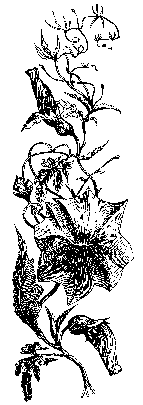


is for Honey Cakes–
two kinds
Both these cakes are delicious. I love recipes that feature honey as the sweetener. You can use unbleached all-purpose flour or, my preference, whole wheat pastry flour in either of these recipes; you might use just a touch less if using the whole wheat.
Honey Pound Cake
½ cup (1 stick) butter, softened
¾ cup honey
3 eggs, slightly beaten
1 teaspoon vanilla extract
2 cups flour
2½ teaspoons baking powder
½ teaspoon salt
¼ teaspoon baking soda
½ cup milk
Grease and flour a bread loaf pan. Preheat oven to 350 degrees. Beat the butter until creamy; add honey and beat until fluffy. Next, add the eggs and vanilla, beating again until well blended.
Stir flour, baking powder, salt, and baking soda in a separate bowl. Alternating between flour mixture and milk, add each to honey butter, blending well after each addition. Pour batter into prepared pan and smooth evenly.
Bake about 45 minutes, or until loaf tests done with a wooden pick. Cool in pan 10 minutes, and then turn onto rack to cool thoroughly. Wrap airtight and store at room temperature for 8 hours before slicing.
Makes 1 loaf cake.

Joyful Honey Carrot Cake
1 cup honey
1 cup oil, such as sunflower
4 eggs
2 cups flour
1 teaspoon baking powder
1 teaspoon baking soda
¼ teaspoon salt
1 teaspoon ground cinnamon
½ teaspoon ground cardamom
½ teaspoon ginger root powder
3 cups grated carrot (about 6 or 7 carrots, or approximately 1 pound)
1 cup sunflower seeds (pecans are good too)
½ cup raisins (or currants)
Grease and flour a 9 by 13-inch glass baking dish. Preheat oven to 350 degrees.
Beat the honey, oil, and eggs together in one bowl, mixing well. In a separate bowl, stir flour, baking powder, baking soda, salt, cinnamon, cardamom, and ginger together, and then add to honey mixture. Finally, stir in the carrots, sunflower seeds, and raisins so all are well distributed. Spread into prepared pan. Bake for 35 to 40 minutes, or until cake tests done with a wooden pick. Top with cream cheese spread (below), if desired.
Makes 1 large cake.

Cream Cheese Spread
Soften 1 (8-ounce) package cream cheese and mix with ¼ cup honey, blending well; spread on cooled cake and cut into squares to serve.
Honey On the Body, As Well As In
In addition to using honey in treats such as these cakes, honey also has a place in the kitchen apothecary. Honey is antimicrobial and bacteria will not grow in it, so it can be spread on minor wounds and scrapes, and most notably on burns. You can use honey as a facial while you relax in a warm tub—just tie your hair back and spread the sticky, sweet amber all over your face and neck and settle in; simply wash it off in the water after you’ve had enough.
There’s a Time and a Place
One special and important note about honey here. I have mentioned several times throughout this book not to give honey to babies under a year old. The reason for this is that while bacteria does not grow in honey, the bacteria Clostridium botulinum (the one that causes botulism toxicity) produces spores that are very heat resistant, and these spores can sometimes be found in honey, especially raw honey. While I totally advocate using raw honey that hasn’t had all the healthful enzymes cooked out of it (and when making herbal syrups, you’ll notice my instruction to heat at a very low temperature), and while these spores are not harmful to the healthy human adult body, they may possibly cause an infection in the infant’s intestinal tract. Therefore, honey should not be fed to infants, even in cooked foods. They don’t need sweets anyway.